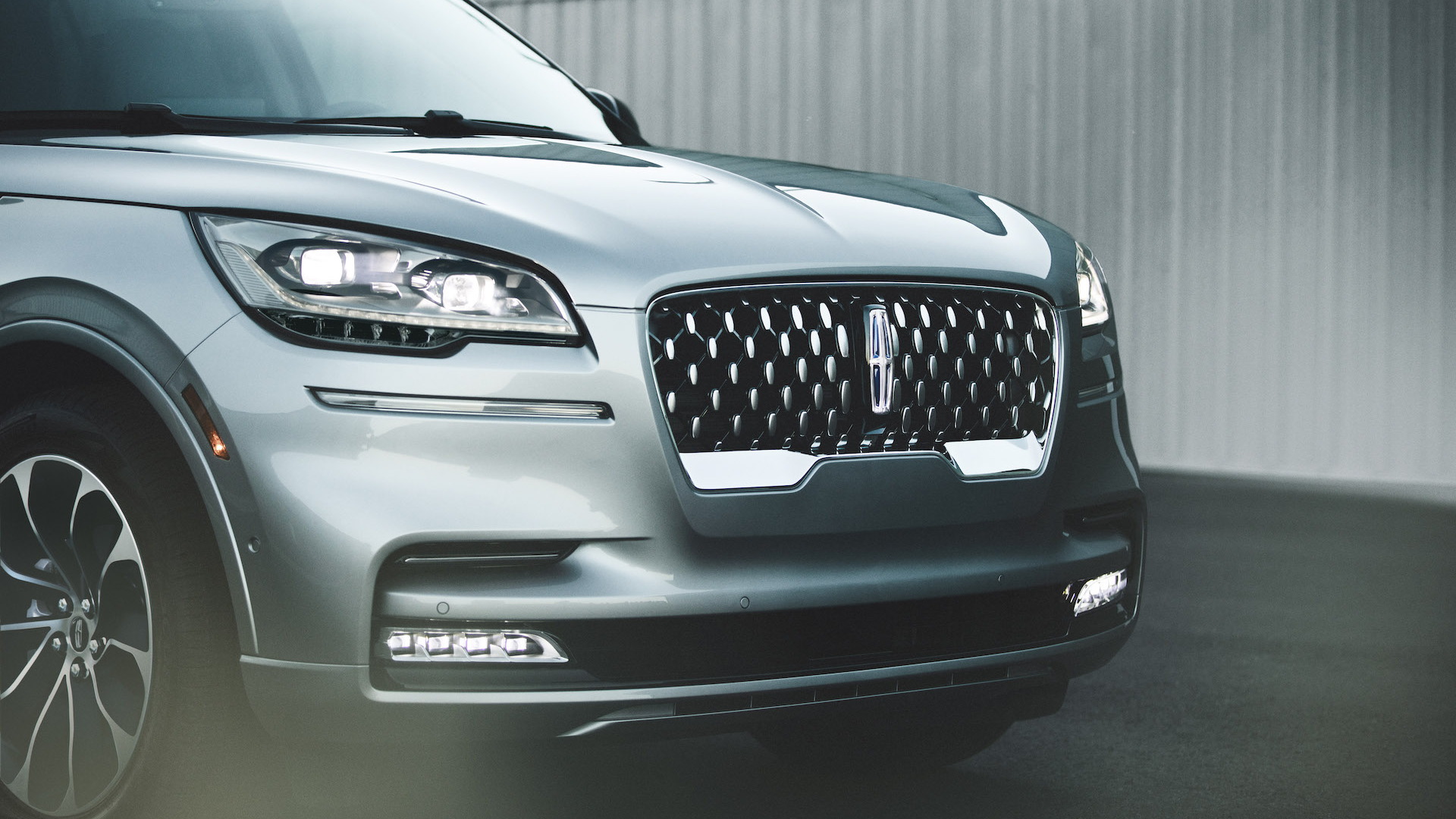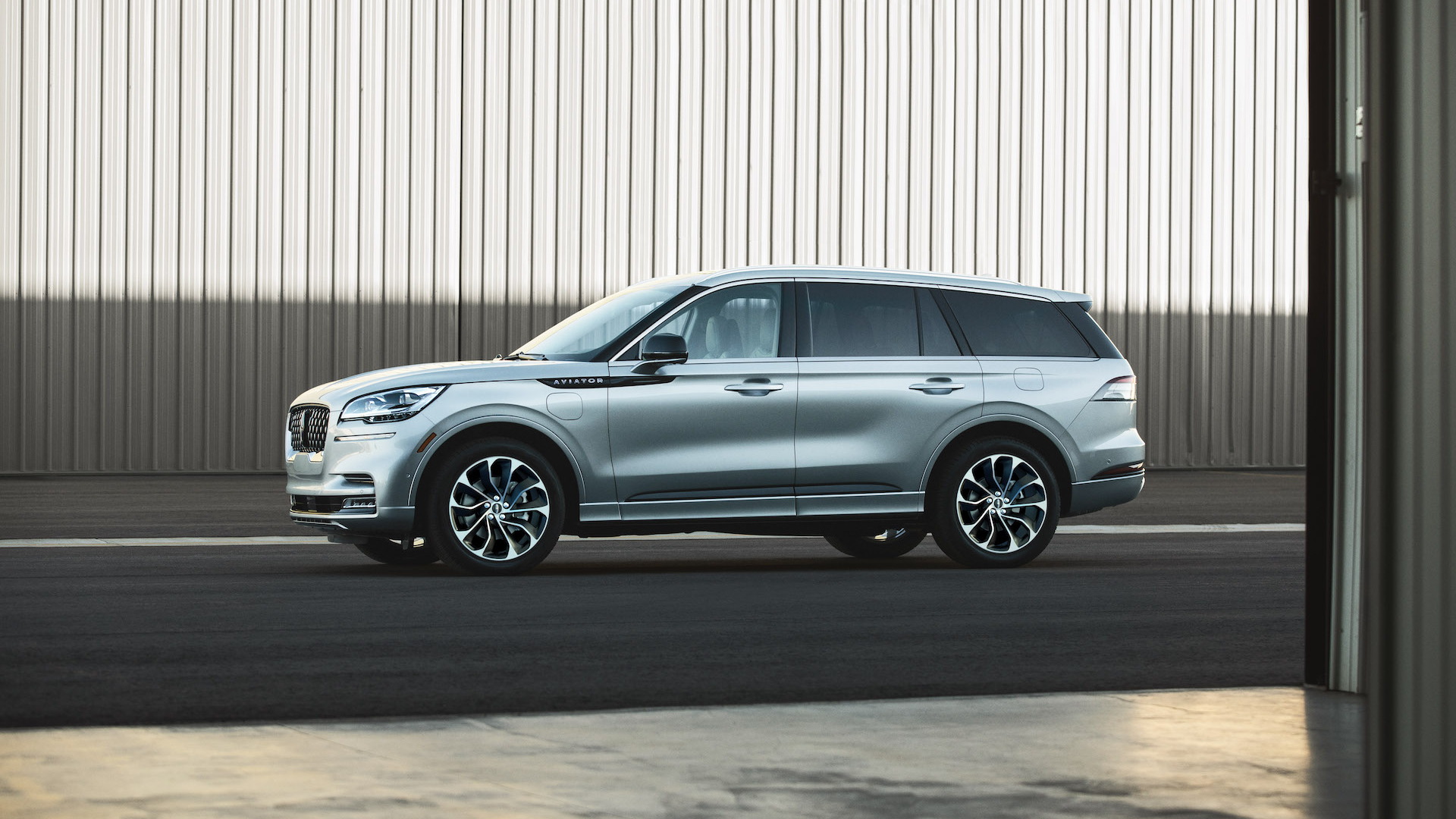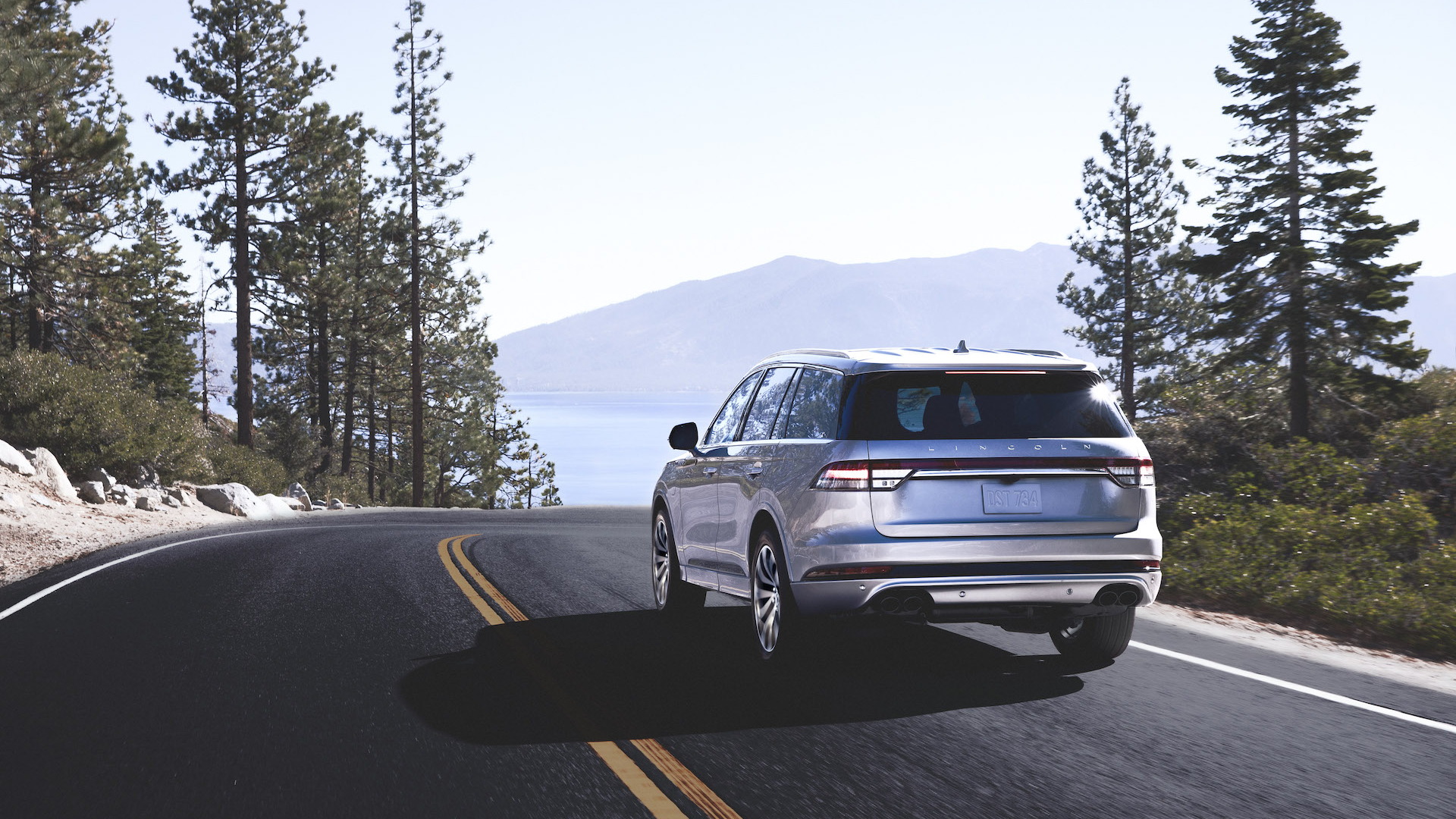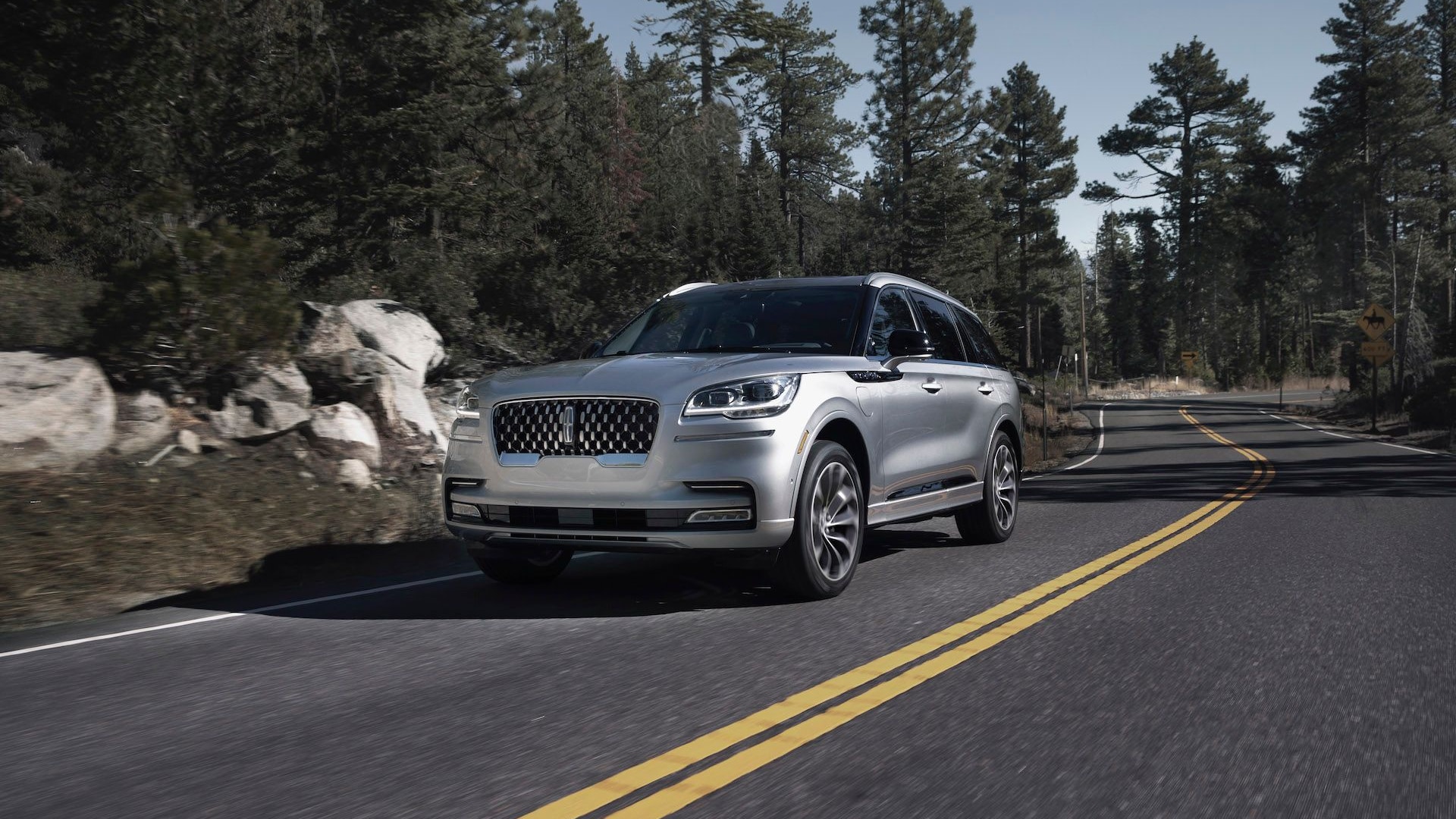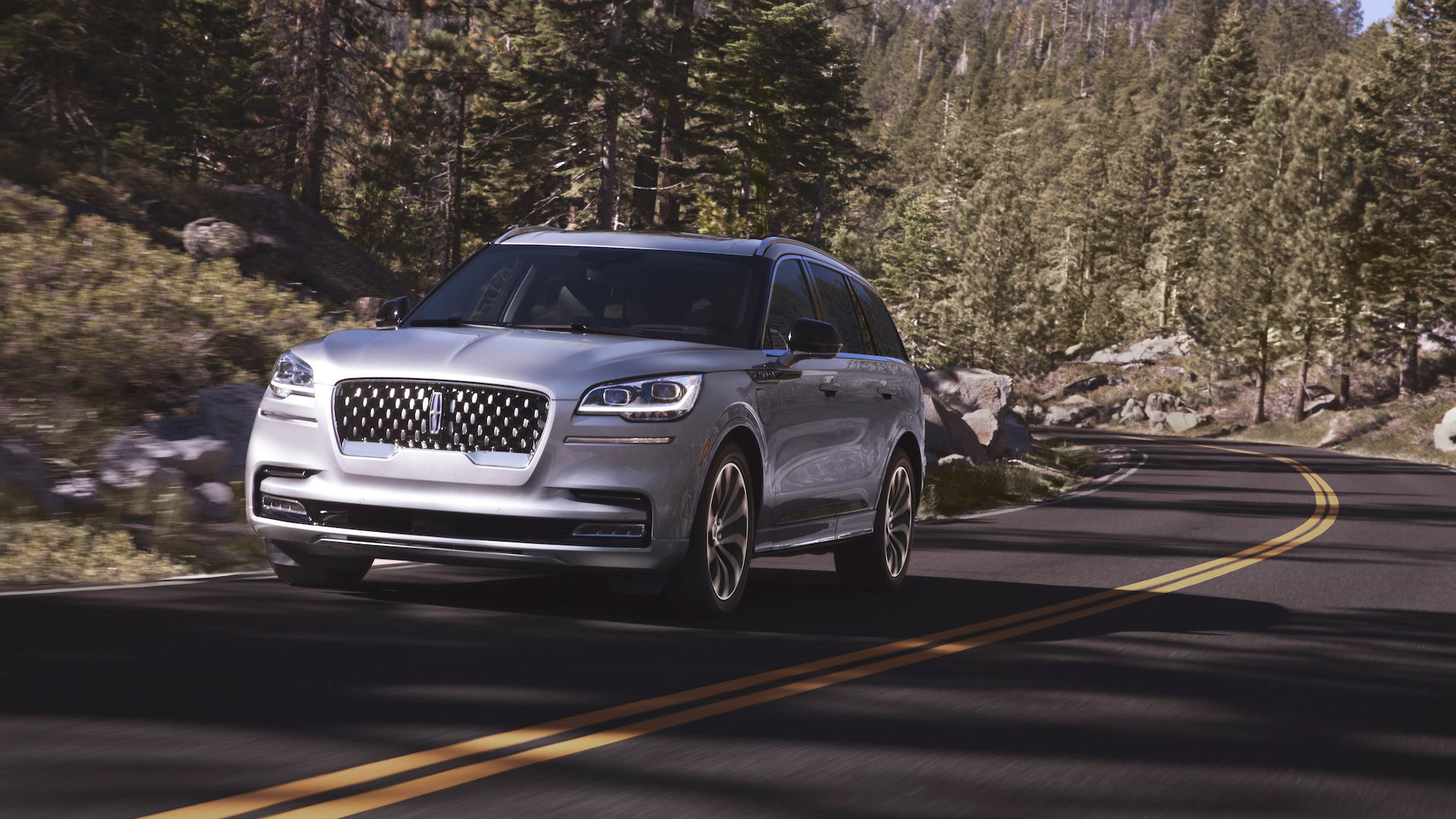Sometimes, in the long development cycle of new, greener vehicles, automakers hit an awkward stopping point. Pencils down—it’s time to turn in your work.
Sometimes that stopping point leaves us with vehicles that don’t advance the notion of cleaner cars very much.
The 2020 Lincoln Aviator Grand Touring plug-in hybrid has caught engineers with some answers left blank on their test. Ford has mapped out a multi-pronged electric-car strategy—but in the meantime, will launch the plug-in Aviator with about 18 miles of electric-only range.
Twenty miles offers a fig leaf that some drivers will use to justify their desire for a more environmentally sensitive luxury SUV. Those who want a truly efficient alternative will have to wait a little longer from Lincoln, though. The 2020 Aviator Grand Touring plug-in hybrid is a placeholder, not a game-changer.
2020 Lincoln Aviator Grand Touring
Aviator hybrid performance: It’s (slightly) electric
The Aviator joins the Ford Explorer on a new rear-drive architecture that’s been planned with electrification in mind, with some battery-pack space beneath the rear passenger floor. It’s an architecture that will spawn a generation of new vehicles, so don’t be surprised to see a plug-in Mustang, or at least a hybrid, from the same platform soon.
The 2020 Aviator Grand Touring has a much bigger (13.6 kwh) battery pack than the 1.5-kwh one used in the non-plug-in hybrid Explorer. Here a 75-kw electric motor assists the twin-turbo V-6 that generates 400 horsepower when it stands alone in non-hybrid Aviators. The combination nets the Aviator Grand Touring some 494 hp and an awesome 630 lb-ft of torque, and strong acceleration to 60 mph in about six seconds. Or, it lets the Aviator go electric-only in some conditions.
That’s all well, but the Aviator battles a couple of factors in its posit as a green machine. Its staggering curb weight—batteries and full array of luxury features included—of 5,673 pounds blunts a serious efficiency play as much as its rorty twin-turbo V-6. Then there’s the pack size and placement itself. There’s not much space for more battery, which leaves the estimated 18-mile electric-only range at the bottom of today’s plug-in hybrid charts. (Official EPA ratings for range and MPGe aren’t yet available.)
While it can recharge those batteries quickly—in about four hours on a Level 2 charger—the Aviator Grand Touring doesn’t seem to manage its additional electric power as well as other plug-in hybrids, even those from Ford. Its hybrid system places the electric motor ahead of the transmission, and the coupled-in battery power creates noticeable and frequent shift shock (despite the use of a torque converter to help with that). It’s not a luxury feel—and it’s all the more noticeable when compared to other less expensive plug-ins such as the Hyundai Sonata Plug-In Hybrid.
The plug-in Aviator is quieter when it taps its electric power, of course, and towing isn’t too far off the mark at 5,600 pounds, compared to 6,500 pounds on the non-hybrid model. It also rides more smoothly, perhaps because of its extra heft.
What it doesn’t do is hold enough energy to ensure a single day’s drive on electric power alone for most drivers—and with battery-electric SUVs already a reality, it’s a pencils-down moment that catches the Aviator Grand Touring before it feels fully realized.
2020 Lincoln Aviator Grand Touring
Get thee to the plug
The Aviator Grand Touring clearly was conceived in the time before Ford took its big cannonball leap into electrification. Since it was signed off on years ago, Ford’s plans for electric vehicles have erupted in a half-dozen ways on at least three distinct branches, from home-grown architectures to global power plays in combination with Volkswagen. The Aviator Grand Touring amounts to a demographic play.
“The intention is not to only sell it in certain markets, but there are certain markets, certain customers, certain demographics—California is the best example—of customers who are just looking for that in their life,” Lincoln’s marketing manager for SUVs, Megan McKenzie, told Green Car Reports earlier this year.
2020 Lincoln Aviator Grand Touring
That’s not cynical—it’s valuable. The Aviator hybrid does two important things for the brand: it gets Lincoln shoppers aware of electrified vehicles, and it gets them in the habit of charging vehicles, a critical step when the next step might be a plug-in Lincoln that doesn’t use gasoline at all.
The gas-free future for Lincoln will come in increments, with its plug-in future advanced this year with the introduction of the plug-in Corsair crossover hybrid. It’s a platform-mate with the new Ford Escape, and both will adopt a plug-in powertrain blessed with the superior integration and coding of Ford’s prior small hybrids, including the C-Max Energy and the previous Escape hybrid.
Beyond that, the upcoming Ford Mach E electric crossover—the one planned as a “Mustang-inspired” compact vehicle, arrives next year with a base price of about $45,000. The pure-electric Lincoln SUV promised for 2021 will be drawn from that architecture, with another larger Lincoln electric SUV, via Ford’s deal with Rivian, likely to follow a year later.
For the next 18 months or so, the Lincoln Aviator Grand Touring will be Ford’s most advanced plug-in car. It isn’t clearly an efficient car, by objective measures—it’s more of an inflection point for a luxury brand that must now pivot off its V-8-powered past.
